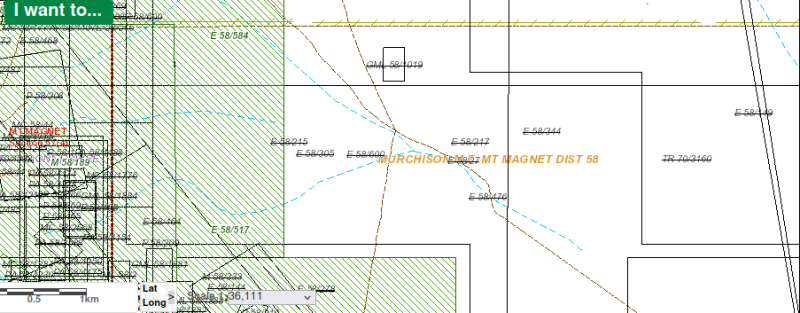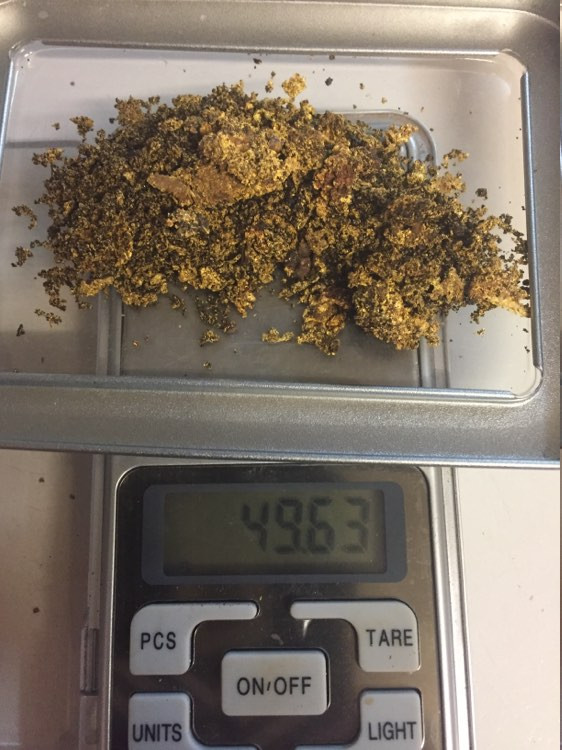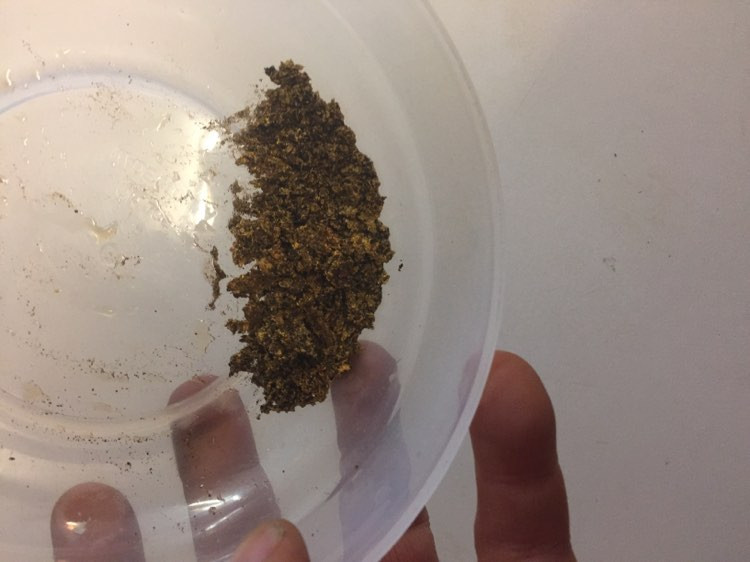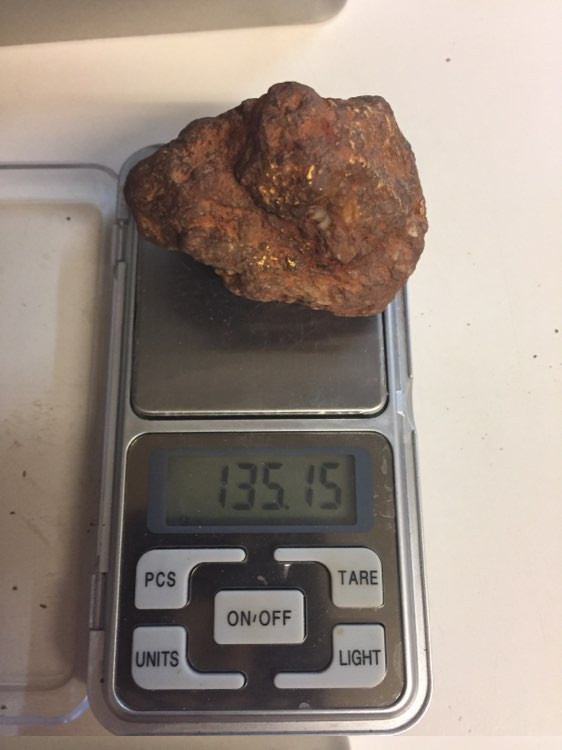
kingswood
Full Member-
Posts
64 -
Joined
-
Last visited
-
Days Won
1
Content Type
Forums
Detector Prospector Home
Detector Database
Downloads
Everything posted by kingswood
-
If all you are wanting to do is go over known patches while chaining to see anything missed at depth (and cant afford a 7000), then the 3000 with a large coil is a fairly decent option. The 3000 combo with the 24x12 UFO mono found buckets of deep gold years ago, theres no reason why it wont do the same now. Use whatever you can afford as a second machine. The 6000 will detect big bits at very good depths....I know of a 1kg bit detected at just over a metre. It all depends on what you think may be down at depth. I have no idea which machine (3000 with big coil v 6000) will detect a 3g deeper as I havent ever tried a test on that. But all things considered, generally bigger coil equals bigger detection depth but drops a bit of sensitivity on smaller bits. If I were in your situation (and I have been), I would use the 19" on the 7000 over everything else 🙂 But as you mention old machines, then the 3000 with a big coil may be an option as it "should" detected big bits at depth.....My 3000 doesnt really get much of a run these days as the 6000 is my general "go to" detector and I use the 7000 with the 19" as the depth detector on known patches to see if anything missed at depth.
-
Thats pretty cool. A 3000 with a 24x12" ufo mono may be worth swinging over those areas.
-
Yeah i had the same thought too 🙂 If convinced its virgin ground, then would be interested to know the depth the larger bits found with the 6000 were found at.
-
I would send the mate back 😉 ha ha
-
Yep thats me too. I dropped the larger pick a few years ago and now detect with the small pick hanging thru a tool belt pouch belted around the waist. If I need the larger pick, will just walk back and get it. I havent had to do that yet ha ha. The tool pouch is awesome as it has a slot for the pick to slide into, a spot for the scoop and 2 pouches for GPS, gold jar etc.
-
No worries. Everyone starts somewhere and I am thankful for all the help and advice I got when i started out 🙂 Often with old leases that I find interesting, I then flick into Geoview to see if there are any reports attached to it. Sometimes that gives you a bit of an idea of what work has been done. If it was a mining or exploration company their reports often have better maps than I could otherwise get, so I tend to save them. Their drill or surface sample results also often offer clues....often not large enough results for them to bother about, but worth a look as a prospector.
-
There are so many factors to consider though....did the people who did the work use their own machines or hire? if hired its expensive and they could have rushed to get the bigger gold but likely left lots of bits behind. Was it worked with new detectors or old? Older detectors could easily have left a few ounces of small bits behind. Did they actually work the right area? They may have found a patch but due to hire constraints or time constraints, only scraped the area where they found a patch, but missed the other gold away from the patch. Aureous is 100% correct, no one gets it all. I have found decent nuggets and speccies next to people's old dig holes. Many people have found nuggets in other peoples chained patches. Sometimes you swing from one direction and you wont hear the gold, but coming from another angle, you do detect it.
-
No worries. Old workings....could be shafts or could be shallow pits. They are evidence that the old timers were onto something...panning along and digging pits or shallow workings trying to dig onto the source. Remember that these guys were loaming not detecting and usually didnt waste their time digging random pits. They mean that they found something in the pan and were spending time trying to locate the best place to drop a shaft. Multiple pits like this are a great sign for gold detecting as it often indicates that there is (or was) as source around there. Dead SPL's are on tenegraph. They will end with an "S", so something like PXX/xxxx-s. Thats an SPL. Any dead lease in a random spot. Could be a prospecting license or an old mining license. If you are looking at tenegraph and theres a dead P or M somewhere random on an active E or on vacant ground, its worth a drive out to have a look. Remember need a 40E to detect on a live E. It could be an indicator that something of interest was found many years ago as someone went to the trouble of pegging and applying for it. Like in this attached example: see the old GML in the middle of nowhere? Have to ask yourself why is it there? Did someone find something? Are there old workings there that havent been surveyed?? Its always worth a look.... Contact zones are basically where different rock types have come together, for example granite and greenstones. Its important as its related to tectonic movement that forced the rocks together and possibly allowed gold bearing fluids to be forced into the zone. Where there are contact zones, there will also likely be faults, fractures and fissures. Gold in WA is where it is because of geological reasons. If the geo isnt there, the gold usually wont be either. Even when we consider secondary gold in laterite, its where it is because of the underlying well covered bedrock geology. Some of the contact zones are quite obvious at a surface level, but others are covered by many hundreds of metres of overburden. Its why geo maps and mag imaging are an important tool.
-
Just from my own experience, Dead tenements dont really mean much to me at all...simply as the majority of the gold areas will have dead tenements dating back to the old 1890 GML's..... Old workings in a line, super exciting..... Dead SPL's, great! Dead leases in random unexpected places, kinda interesting and worth looking at. Tony is 100% correct in saying to detect the edges of the contact zones though. The majority of WA gold is close to fractures/faults and contact zones.
-
Avantree Interested In Hearing From You
kingswood replied to Wiggins's topic in Detector Prospector Forum
Never had an issue with the Torus paired to the 6000. Works very well. More rugged housing would be good but apart from that, I have no complaints at all.- 78 replies
-
- 4
-

-
- minelab gpz 7000
- headphones and audio
-
(and 1 more)
Tagged with:
-
How Long Did It Take To Find Your First Nugget?
kingswood replied to Arky's topic in Detector Prospector Forum
took me 6 months of detecting once a weekend before I finally scored a small 0.2g! My problem for the first 6 months was that I was using a PI mine detector with silent threshold....literally only dug loud signals. Finally scored a bit the first time out with the 2300....sucked and licked that bit about 40 times while staring at it to make sure it was actually gold 🙂 Looking back, I think I walked over gold with the mine detector......I just didnt know at the time that I should have investigated the small squeaks and farts.... -
Is The Axiom Our New King???????
kingswood replied to Norvic's topic in Metal Detector Advice & Comparisons
0.343g. Happy New Year 🙂 -
Not to mention telescopic rods and sliding arm rests 🙂
-
This one? https://victoriancollections.net.au/items/523a963a2162ef1d6c430f42
-
Gpx-6000 Coil Specifics
kingswood replied to RONS DETECTORS MINELAB's topic in Minelab Metal Detectors
Much appreciated. Very useful chart! -
I'd call that a windcheater 🙂
- 17 replies
-
- 2
-

-
- new zealand
- minelab gpx
-
(and 1 more)
Tagged with:
-
Yep my biggest fear and the reason I dont ever use headphones. Was detecting in a quite remote area on my own one day and heard a bark...then another bark, then a growl....Needless to say I hurried back to the car. The 7000 would have turned into an expensive club that day if it was needed. If i am going to be attacked by dogs, I would rather stand a chance of hearing them first. I even start heading back to the car if I see a reasonable fresh dog poo!! I am not really a fan of killing animals, however with the sheep and cattle losses here to wild dog packs, I understand it.
-
Even big finds in well worked areas. Amazes me that you can still find the odd sunbaker in areas that have been "well" detected. Just goes to show you that no one gets its all. Should have zigged, but you zagged and missed a sunbaker by that much....
-
GPX 6000 - Tips, Tricks, Technical Questions
kingswood replied to Northeast's topic in Detector Prospector Forum
Even more so in areas you already have gotten gold out of 🙂 This is where I think the 6000 shines....So I pinged a small small bit....it makes you slow down. Slowed down, dug each signal, ended up with a few more...slowed down again, found 3g sunbaker :).... Then back to chain area....28 bits and counting, still havent finished chaining with the 6000....every time I move further up, I get more bits....And then i have to put the 19" GPZ coil over the ground that looks deeper!! I always like to break the monotony of chaining by just having a wander around before I go home....bam!...large speccie 230 metres away.... If I had not found the first tiny bit, I would not have gone back to the area again and again 🙂 -
GPX 6000 - Tips, Tricks, Technical Questions
kingswood replied to Northeast's topic in Detector Prospector Forum
Great finds NorthEast! Well done! Got to love bonus hot rock gold 🙂 have you noticed any particular warbles?? Every target has sounded the same to me, except thin wire... With the 7, there was a kinda "gold warble"...the 6000 so far (to me) sounds pretty much the same on everything, just volume is different. dig everything I guess, like i generally do anyway. The specimen is a case in point...loud initial signal, 2 boot scrapes and it was overloading....almost was thinking big steel bolt. -
GPX 6000 - Tips, Tricks, Technical Questions
kingswood replied to Northeast's topic in Detector Prospector Forum
well. its dried 🙂 I am over the moon. Love the 6000. 49.63g of the good stuff! 230 metres or so from a small patch i have been working. This machine is amazing. I am in love 🙂 -
GPX 6000 - Tips, Tricks, Technical Questions
kingswood replied to Northeast's topic in Detector Prospector Forum
crushed and panned 🙂 Currently sitting outside drying in the sun before weigh in. I reckon about 25g. Now...Just on the 6000, I cant say i am noticing any double blips on gold...or hi/low...so far literally everything has just sounded loud!...Even those small lead shot...The only thing that has sounded a bit different is very small squiggly bits of wire...They sound hollow'ish like gold on the 7000... maybe I need hearing aides... -
GPX 6000 - Tips, Tricks, Technical Questions
kingswood replied to Northeast's topic in Detector Prospector Forum
Well the 6000 in auto bangs hard on ironstone speccies 🙂 This one today about 300-350mm down. Loud!! I tried Sg test which I suck at so I discovered 😉 Will dolly and pan tomorrow....gold on all sides so may be decent...I hope! -
GPX 6000 - Tips, Tricks, Technical Questions
kingswood replied to Northeast's topic in Detector Prospector Forum
Yeah I agree....I dont think i would get as low as 1 either.... Its been my experience so far, even with pretty bad EMI, that just dropping it a bit has helped with the mono. That been said, the auto settings are great! Sometimes a tad noisy, but regular noise cancels do work. -
GPX 6000 - Tips, Tricks, Technical Questions
kingswood replied to Northeast's topic in Detector Prospector Forum
I think thats what the manual implies. They say "Generally, a Double‐D coil should only be used if noise cannot be managed by using a Mono coil with the Noise Cancel Procedure" and it (DD) should be used in areas of known high EMI or conductive ground" They way I read it, is that the mono should always be the first choice. Try auto, if quiet, try auto+, which they add has extra depth in low noise conditions. The manual goes on to say that manual sensitivity can be reduced either to control EMI or ground noise. So yes, I would drop sensitivity in mono first before putting on the DD if I can 🙂







